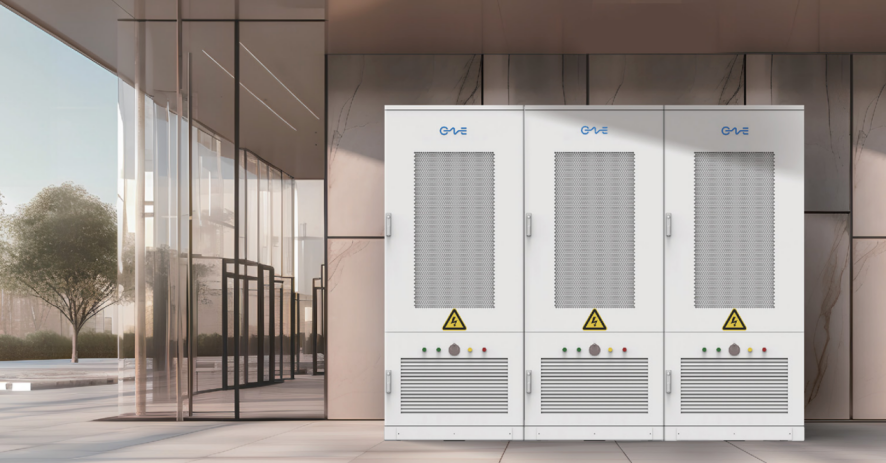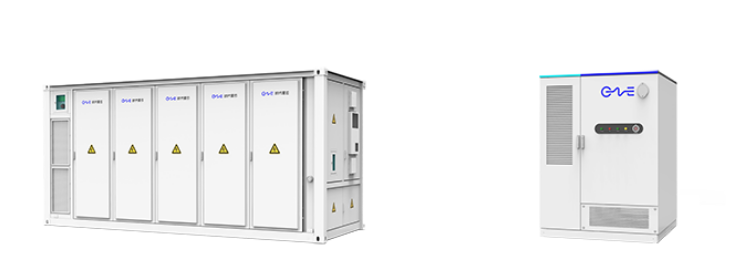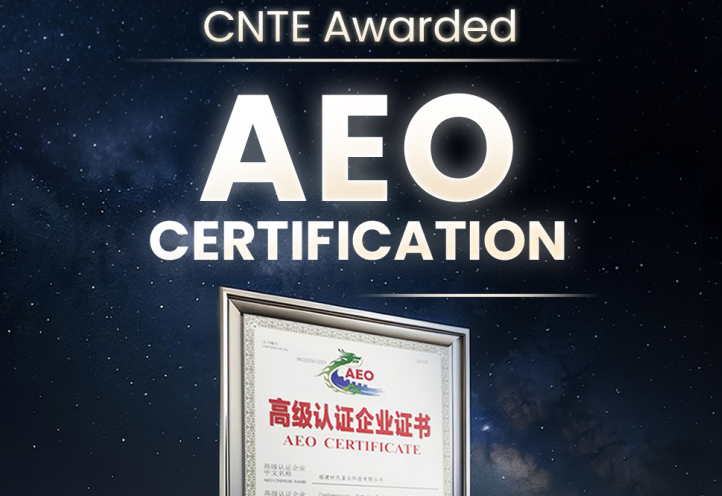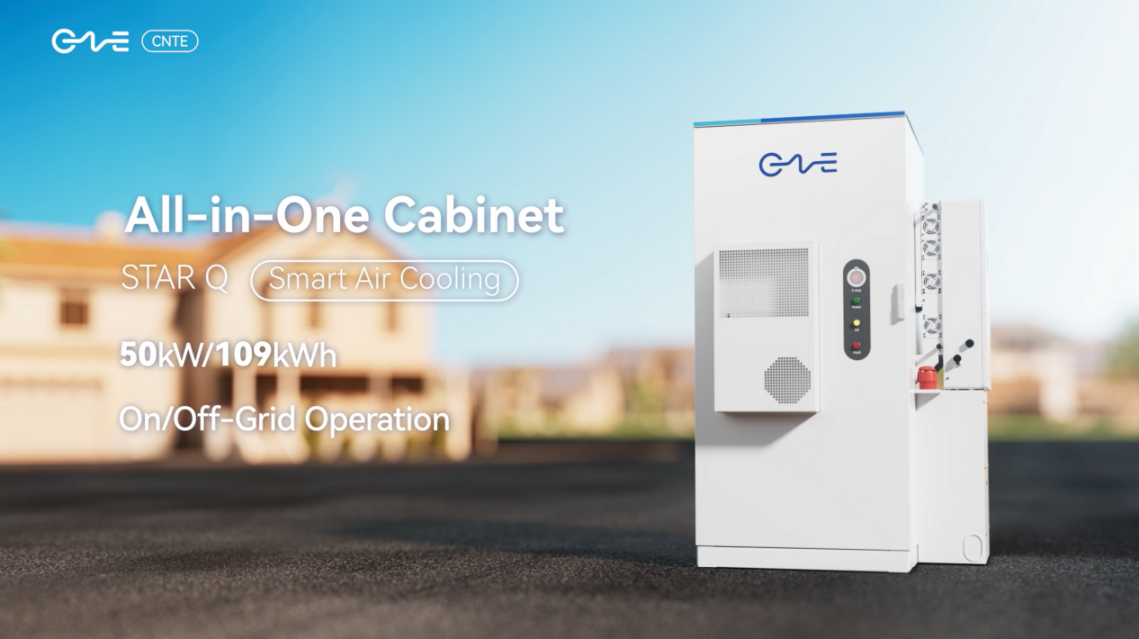How lithium ion batteries work? Case study
As the global demand for renewable energy continues to rise, the use of energy storage systems has become a key component in modern energy management. Lithium-ion batteries, a proven technology with widespread application, have found their place at the heart of these systems. Companies like Contemporary Nebula Technology Energy Co., Ltd. (CNTE) are leading the way with innovative commercial and industrial (C&I) energy storage solutions that meet the growing needs of businesses around the world.

In this article, we will explore how lithium ion batteries work, the relevance of energy storage systems for commercial and industrial settings, and how CNTE’s solutions are transforming the energy landscape with case studies such as Gothenburg, Sweden.
Understanding How Lithium Ion Batteries Work
Lithium-ion batteries are commonly used in many devices, from smartphones to electric vehicles, but their application in large-scale energy storage is particularly exciting. These batteries work by shuttling lithium ions between the anode and cathode during charge and discharge cycles.
The Structure of Lithium-Ion Batteries
A typical lithium-ion battery consists of four main components: the anode, the cathode, the electrolyte, and a separator. The anode is typically made from graphite, and the cathode is made from a lithium-metal oxide. The electrolyte facilitates the movement of lithium ions between the anode and cathode, while the separator prevents short circuits.
Charge and Discharge Mechanism
When the battery is charging, lithium ions move from the cathode to the anode via the electrolyte. During discharge, the process reverses, and the lithium ions move back to the cathode, creating an electric current that powers devices. This efficient charge/discharge process, combined with high energy density, makes lithium-ion batteries ideal for energy storage.
Benefits of Lithium-Ion Batteries
Lithium-ion batteries offer several key advantages over other types of batteries, including high energy density, longer lifespan, and relatively low self-discharge. These features make them suitable for energy storage systems that support the demands of industrial and commercial applications.
C&I Energy Storage Systems: A Necessity for Modern Businesses
Energy storage systems (ESS) are increasingly important for commercial and industrial (C&I) sectors. These systems store energy when demand is low and release it during peak periods, providing businesses with greater control over their energy use and costs. CNTE, a leader in this space, offers energy storage solutions tailored to the diverse needs of industries, using advanced lithium iron phosphate (LFP) battery technology.
Flexible Application Scenarios
CNTE’s C&I energy storage systems are designed to meet the unique requirements of various industries. From industrial parks and office buildings to shopping malls and hospitals, businesses across sectors can benefit from the flexibility and scalability of these systems.
For example, in industrial parks where electricity demand fluctuates widely, energy storage systems can stabilize power supply by storing excess energy during off-peak hours and releasing it during high-demand periods. Office buildings and malls, on the other hand, may use these systems to reduce energy costs through load leveling and peak shaving.
Energy Storage Options: 0.5P/1P Models
To address different business needs, CNTE provides both 0.5P and 1P energy storage systems. The 0.5P model is ideal for smaller applications with moderate energy demands, while the 1P model is suited for businesses with higher energy requirements. These scalable solutions offer extraordinary safety and performance, ensuring that businesses can choose the most appropriate option based on their energy consumption patterns.
Enhanced Safety Features
Safety is a critical consideration in energy storage systems, and CNTE ensures its products adhere to the highest standards. The company’s energy storage systems feature quadruple fire protection, precision fire alarm positioning, and real-time insulation monitoring. This ensures the systems remain safe under all operating conditions, protecting businesses from potential hazards.
Smart Energy Management for Optimal Efficiency
A key differentiator that sets CNTE’s energy storage solutions apart from the competition is its advanced Intelligent Energy Management System (EMS). This sophisticated system plays a pivotal role in fine-tuning overall performance, ensuring long-term operational efficiency, and significantly contributing to energy savings, all of which lead to cost reductions for businesses over time.

Cloud-Based Monitoring and Real-Time Insulation Analysis
The intelligent EMS doesn’t just safeguard the system’s integrity—it also facilitates continuous real-time monitoring through an integrated cloud platform. This digital platform meticulously tracks various operational parameters, including energy consumption, battery health, and overall system status. Businesses can conveniently access this critical data remotely, empowering them to make informed decisions and adopt preventative maintenance strategies well before issues escalate, ultimately ensuring smooth and efficient operations.
Precision Liquid Cooling for Temperature Management
One of the inherent challenges in energy storage systems, especially those relying on lithium-ion batteries, is effective thermal management. CNTE tackles this issue by incorporating a highly precise liquid cooling system, which regulates the temperature within the battery pack, ensuring that any variance does not exceed 4°C. This meticulous control over temperature distribution is essential not only for preventing overheating but also for prolonging the battery’s lifespan, even under demanding usage conditions. Such precision ensures that the system continues to perform at an optimal level, regardless of the operational load.
Business Benefits of EMS Integration
The integration of intelligent energy management systems brings a host of valuable benefits to businesses. These include improved system safety, as real-time monitoring helps detect and mitigate risks early, as well as extended battery life, thanks to precise thermal control and optimized performance. Furthermore, businesses can significantly reduce operational costs by adjusting energy consumption in real-time, enabling them to respond swiftly and efficiently to fluctuating energy demands and evolving market conditions. This dynamic capability allows for greater flexibility, ensuring that businesses can make the most of energy resources while maintaining operational resilience.
By leveraging CNTE’s advanced EMS, businesses not only achieve higher efficiency and safety but also position themselves to capitalize on cost-saving opportunities in a rapidly changing energy landscape.
Meeting the Diverse Needs of Businesses with Scalable Energy Storage Solutions
CNTE delivers a comprehensive range of energy storage solutions, tailored to address the unique and varying requirements of businesses. With storage capacities spanning from 206 kWh to 4 MWh, these versatile systems are perfectly suited for everything from smaller commercial enterprises to expansive industrial complexes. This flexibility allows businesses of all sizes to enhance energy efficiency, reduce costs, and safeguard against power interruptions.
Industrial Parks and Office Buildings
In industrial parks, where factories and production facilities face substantial electricity demands, CNTE’s energy storage systems play a critical role in maintaining power stability. These systems not only prevent blackouts but also ensure energy is utilized efficiently, optimizing consumption to reduce operational costs. Similarly, office buildings greatly benefit from these systems through peak shaving, which curbs energy expenses by strategically limiting power use during periods of high demand. This helps companies achieve more sustainable and predictable energy management.
Large Malls and Shopping Centers
For large malls and shopping centers, which must balance the dynamic and often unpredictable energy needs of multiple tenants, CNTE’s energy storage solutions provide an indispensable tool for managing consumption. By efficiently storing energy during off-peak hours and deploying it during high-traffic periods, these systems enable significant reductions in energy bills. Additionally, CNTE’s solutions act as a robust backup power source, ensuring that retail operations remain uninterrupted during outages or unexpected surges in demand.
Hospitals and Critical Infrastructure
In environments like hospitals, where uninterrupted power supply is absolutely essential, CNTE’s energy storage systems offer a reliable safeguard to ensure the continuity of vital services. Power reliability is a non-negotiable in healthcare settings, and CNTE’s solutions—with their advanced safety mechanisms and real-time monitoring—deliver dependable backup power, protecting hospitals from the risks of power outages and minimizing the potential for service disruptions. The ability to maintain operations during emergencies is vital for these critical infrastructures, reinforcing CNTE’s role as a trusted provider of energy solutions for sensitive industries.
This flexibility in application, combined with CNTE’s robust technology, provides businesses across sectors with the power to optimize their energy use, safeguard against risks, and contribute to a more sustainable energy future.
Case Study: Gothenburg, Sweden’s Industrial Energy Solution
One of the most impressive implementations of CNTE’s C&I energy storage system is in Gothenburg, Sweden. As the country’s second-largest city and a major industrial hub, Gothenburg faces significant electricity demands, particularly in its industrial parks, office complexes, and large shopping centers.
Addressing High Energy Demand
CNTE’s energy storage system in Gothenburg is designed to meet the high electricity demands of the city’s industrial infrastructure. By offering services such as frequency modulation, load leveling, and peak shaving, the system helps businesses optimize their energy use and reduce costs.
Energy Conservation and Revenue Generation
Beyond energy savings, CNTE’s system in Gothenburg also allows businesses to generate revenue through ancillary services and peak-shaving arbitrage. This means that businesses not only save money on their electricity bills but can also sell excess energy back to the grid during peak periods.
Long-Term Benefits for the City
The implementation of CNTE’s energy storage system in Gothenburg demonstrates the long-term benefits of adopting advanced energy solutions. By reducing energy costs, increasing reliability, and promoting sustainability, CNTE’s system is helping to drive the city’s industrial growth and contributing to a greener future.
Conclusion
Lithium-ion batteries are revolutionizing the way we store and manage energy, and CNTE’s C&I energy storage systems are at the forefront of this transformation. By offering scalable, safe, and intelligent solutions, CNTE is helping businesses across various sectors—from industrial parks to hospitals—achieve greater energy efficiency and cost savings.
As the case of Gothenburg shows, energy storage systems are not just about storing power; they are about creating sustainable energy ecosystems that benefit both businesses and communities. With CNTE’s continued innovation in this space, the future of energy management looks brighter than ever.
Get in Touch
Recent Posts
Tags
- battery to grid
- better battery renewable energy
- charging station
- clean energy storage solutions
- electrical energy storage exhibition
- energy storage battery pack
- energy storage system solar
- energy tech battery
- ess battery system
- large solar storage batteries
- new battery storage
- optical storage integration
- pcs battery system
- price per kwh battery storage
- smart battery storage
- solar battery container
- solar energy battery storage system
- solar energy storage technology
- solar ess system
- Solar panel energy storage systems
- Solar Power Plant Battery
- solar pv and battery storage systems
- standalone energy storage systems





